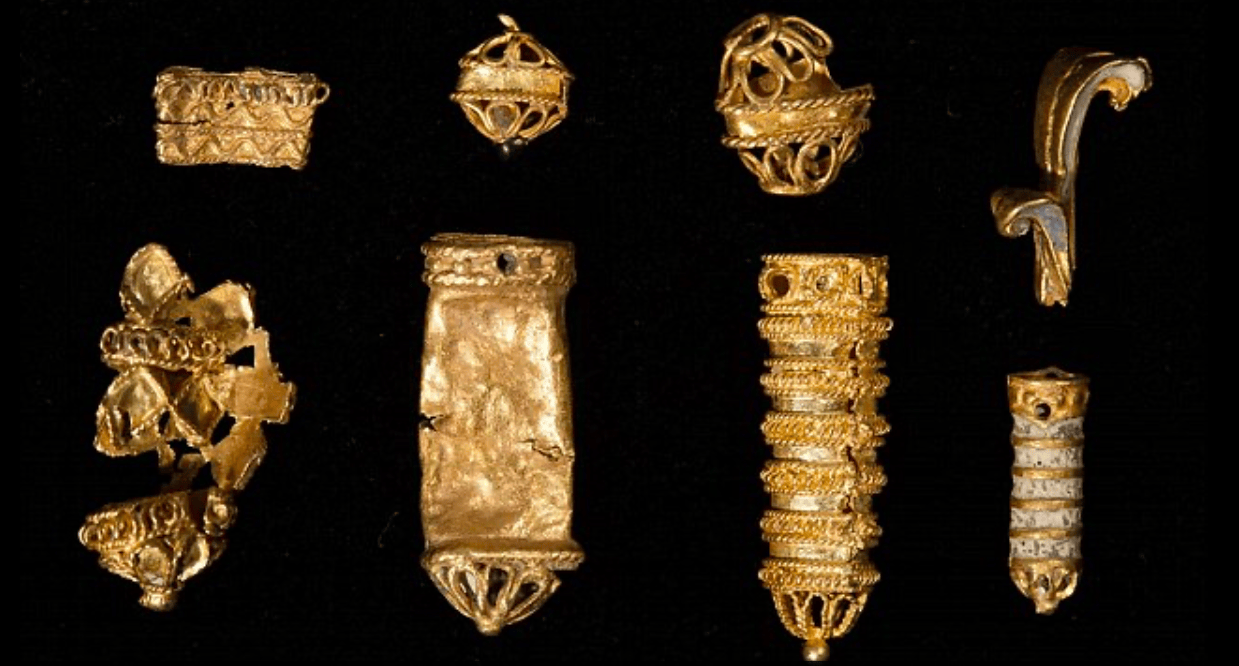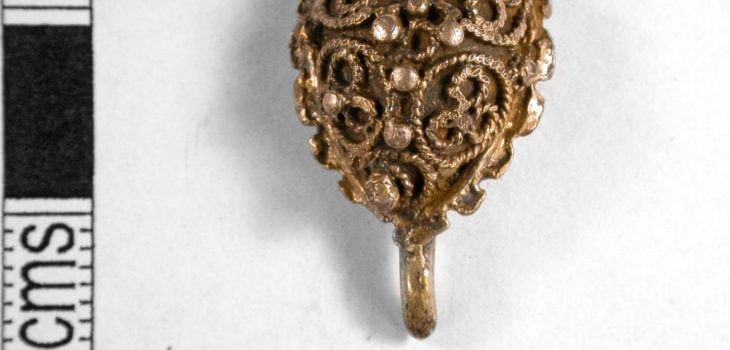
1.1.2016 Tudor jewellery in the Thames
Categories: Treasures , Calendar , Nálezy nejenom s detektorem ve Velké Británii a Irsku

The pile of Tudor jewels was collected by prospectors with metal detectors in England. The ornaments were gradually found in the River Thames and shown to the public five years ago. In addition to the beads and studs, the hoard contained so-called aglets.
Aglets were frills that were placed at the end of shoelaces, which were then used to decorate clothing and hats to represent a person's high status.
The style and appearance of the jewels are so identical that they probably came from a single piece of clothing. Probably a hat that someone threw into the river. Perhaps a wealthy passenger who had just travelled on a boat on the Thames. But the jewels weren't found by the searchers all at once. It's been years in the making. They pulled the jewels out of the water literally one by one. It's a team of metal detectorists who have special permission to search the Thames River.
The experts estimate the ornaments date back to the 16th century, the Tudor period. The museum in London said the individual jewels are so small they could all fit in an egg cup. They are said to be stunning and beautifully document the fashion of the time. Archaeologist Kate Sumnall also revealed that the found ornaments have already been declared treasure.
"We actually declared each piece of jewellery we found as treasure one by one, depending on how the searchers reported them. They are amazing finds, but as a whole they are even more important. That they were found in one area suggests that they were just part of one hat or other piece of clothing," she revealed.
The ornamental jewels were also eventually acquired by the museum for its collection. London's history as a trading port means that the banks of the Thames are believed to still harbour many great artefacts from different centuries that have yet to be discovered. But river silt and clay help to preserve these objects. Most of them have little or no financial value, but they help historians understand how previous generations lived.
We wrote here: Tudor jewellery

Dress Hook
Rosemary Rundle also rejoiced at a nice find six years ago, when she discovered a piece of Tudor jewellery using a metal detector. It was a dress hook measuring 18 by 15 centimetres, which was declared a treasure. It dates from the 16th century and was acquired by Helston Museum.
We wrote here: A dress hook
Sources: www.dailymail.co.uk, https://museumofcornishlife.co.uk/
The article is included in categories:





